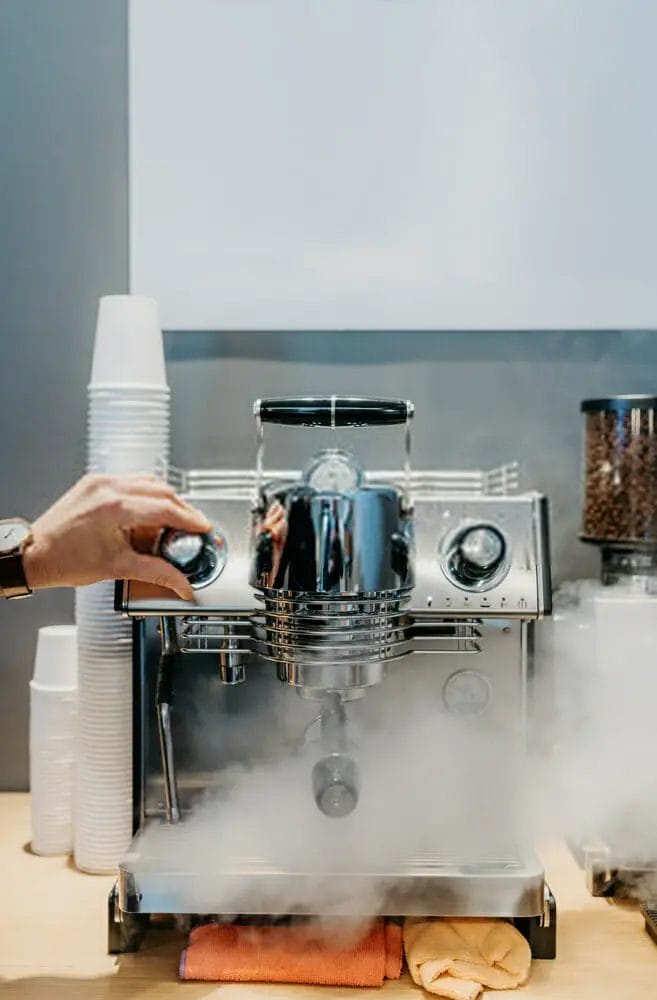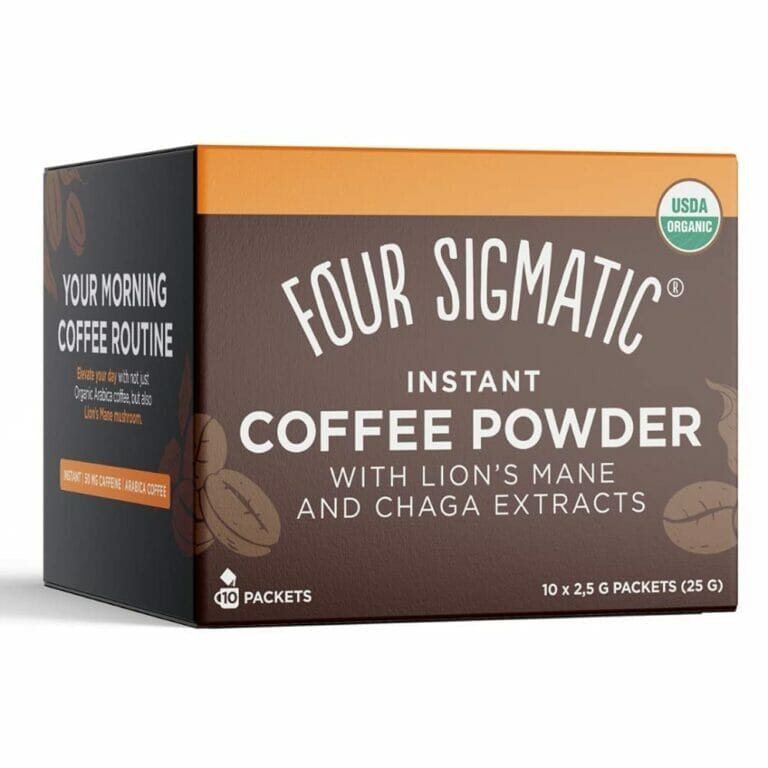Difference Between Froth And Foam In Coffee

If you are an espresso lover, you must know the difference between froth and foam.
But people who do not drink regular coffee may be confused. If you are having a cup of coffee, then isn’t it good to know how it is made? Is it frothy or foamy?
If you are confused about this question, let me tell you that froth and foam are two different things. This article will talk about the difference between froth and foam.
The texture is what makes the difference.
Foam is typically made up of more extensive, lighter bubbles that float on the milk or coffee. Froth is consistent, with tighter bubbles that mingle with the milk and coffee to create a more decadent textured drink from top to bottom.

Foam is significantly easier to make, and despite their best attempts, many working baristas still only make foam with their manual steam wands.
When tighter froth doesn’t produce effectively, steamed milk added to drinks tends to be flat, despite a large amount of fluffy foam on top of the drink.
A keen eye can detect the difference, and most people can taste it as well. The sensation of foam in the mouth is distinctly different from froth.
Frothy drinks are made with espresso machines that provide pressure and steam to create them. Very few espresso machines on the market have an option for creating true machine froth from steam.
Some models can make semi-frothy drinks, but these tend to be variants of steamed milk drinks such as lattes or cappuccinos.
How do these foam/froth bubbles form?
They are made in both professional and private situations. They are commonly manufactured with a steam wand, which can be purchased separately or as a standard feature on practically all espresso makers designed for commercial and domestic use.
Another distinction between frothed milk and foamed milk is that frothed milk is more difficult to prepare and is typically not prepared by unskilled home baristas.
Foam is often easier to make with a press pot and an automatic steam wand. Excellent froth requires a lot of work, a little talent, and usually better equipment.
If you genuinely want to learn how to produce your froth, the best method to get a high-quality froth with ultra-tight bubbles is to practice with a steam wand or, at the very least, use one of the higher-end frothers machines.
Foam will float on top of the liquid in a cup, while froth is mixed throughout the liquid. Foam is created through the introduction of air into heated milk.
The blades on a steam wand rush back and forth to generate airflow within the stainless-steel wand, which disperses steam into the milk. The movement of air bubbles creates tiny pockets of air that rises to the top as it cools.
To attain intense foam, you have to ‘overheat’ the milk. It takes some practice and knowledge of the coffee machine you are using, as you need to set the temperature just above the boiling point.
Then, use a steam wand for a frothier, more flavorful foam that won't float on top of your drink.
Milk froth vs milk foam

- Milk froth – features smaller bubbles that combine with milk and coffee to provide a more decadent, textured drink. For lattes, milk froth is frequently utilized.
- Milk foam has larger, lighter bubbles. It frequently settles on the coffee to form the frothy, foamy topping. The milk foam is ideal for cappuccinos.
- Milk foam is simpler to make. However, milk froth takes a specific hand ability to generate a tighter froth suited for gourmet latte beverages and latte art.
How do you make these bubbles?
Frothing or foaming milk is the process of injecting air into a liquid. Ensuring your milk is warm enough is critical in making this a success. The ideal temperature is around 95 degrees Fahrenheit.
You can create milk bubbles in a variety of ways, including:
- In a container, shake the ingredients. Fill a jar halfway with warm milk. Close the cover tightly and aggressively shake. It produces a lot of milk bubbles. It’s good enough to make a handmade cappuccino.
- Hand-whisking: You need to place the warm milk in a bowl. Whisk the milk back and forth. When opposed to the jar exercise, this produces more even foam.
- Make use of an electric mixer. Warm the milk—place in the mixing bowl. Whisk for a minute or until the desired fluffiness is achieved.
- Use the frothing wand—warm up some milk. Place the wand in the container where you heat the milk. Whisk the mixture until it reaches the desired frothiness.
- Set a blender on medium speed with warm milk. Always keep the lid firmly closed.
- The French press. Fill the carafe halfway with warm milk. Then, plunge the plunger up and down until you get the required froth.
Best milk frothers in the market
There are various milk frothers on the market for home use. Frothers are available for about $40 to $100. The best milk frother will have:
- A cup to rest the frother in while you froth the milk. It will ensure a stable base as you work. The other good thing about having a separate cup is that it will catch any splashes, always helpful.
- Adjustable heat setting and speed control for ultimate customization of your beverages.
- The capacity for heating the milk and whisking it, all during one process. Some machines need you to heat the milk beforehand. Others only foam the milk.
- A long wire whip, which will mean you can froth in tall glasses without needing to keep refilling the glass with cold milk. Small handheld frothers are available that use a battery to froth up your latte or cappuccino.
However, these aren’t suitable for producing high volumes of frothed milk, and they can be pretty messy as well.
Breville Milk Café
This milk frother can froth 3 cups of milk. It features an automatic shut-off feature. When the desired temperature and froth are reached, it turns off.

It also includes two discs: cappuccino and latte, aiding in creating the perfect froth for your favourite drink. It's excellent with organic milk.
Epica Automatic Milk Frother
You may use this milk frother with hot or cold milk, ideal for a hot latte or an iced cappuccino. It can heat a cup of milk and make three or more latte cups.
When milk is frothed, its volume increases. You may remove the carafe for cleaning.
Nespresso Aeroccino Plus Milk Frother
It has a capacity of 250 ml of milk and can froth both hot and cold milk for lattes and cappuccinos. It can froth milk in as little as 70 seconds.
Conclusion:
So, in a nutshell, there is a difference between froth and foam. In general, foam is produced by adding air during the blending of hot milk with other additives to create foam that floats on top of the liquid.
Frothed milk is produced by dispersing hot air, whisked by hand, or using an electric apparatus into the liquid, creating bubbles that remain suspended within the milk, creating a velvety texture.
You can froth milk using a steam wand, some espresso machines and milk frothers. An electric milk frother is another option for those who want to easily make their lattes and cappuccinos at home with minimal effort.
So enjoy your frothy latte, whether it is a latte or cappuccino, and feel free to include some frothed milk to achieve the best taste possible. Happy drinking.
FAQs
1. Can you froth milk in the microwave versus a milk frother?
No. It’s not safe to do this. The milk, which can be scalded, could explode and burn the person heating it.
2. Can you froth milk in a blender?
There are two ways to do this. First, you could pour cold milk into the blender and briefly pulse it at a low speed to break up the surface tension of the milk. Then, run it at high speed for about ten seconds or so.
The second way to froth milk in a blender is with hot milk heated up beforehand. Pour half a cup of the hot milk into the blender and blend it until frothy bubbles form.
3. Which method is better? Milk frother or steam wand?
There is no right or wrong answer here. Both have pros and cons, so you might want to try them out until you can get a feel for which works best for you.
4. How can you get a frothier froth?
Extend the whisking time. Milk frothers powered by steam tend to be slower, so it takes a little longer to achieve the desired level of foam. However, this allows more air to be incorporated into the milk for a thicker texture.
5. What type of milk is best for frothing?
It doesn’t matter if it’s fresh and has not expired. Ideally, fresh milk with most of its fat intact is best because it will produce a creamier foam in texture and more satisfying to drink.






